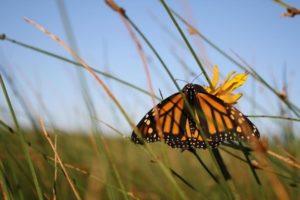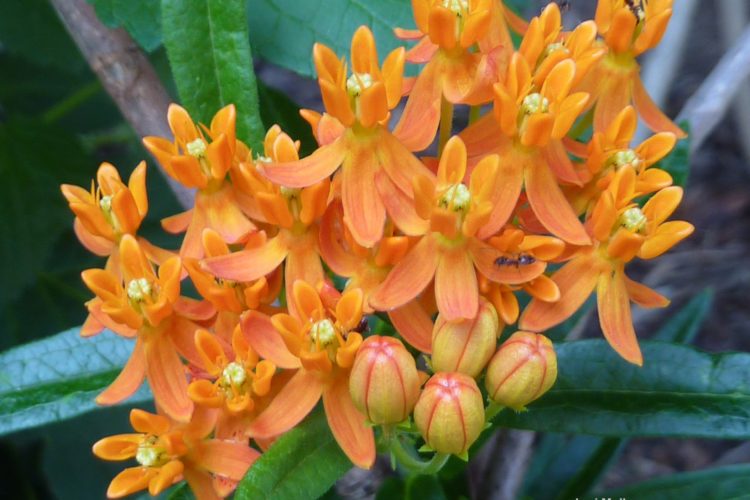We have much more to do and your continued support is needed now more than ever.
Milkweed for Monarchs in the Sunflower State

Imagine the prairies of Kansas once again filled with thousands of monarchs migrating south! Recently, multiple agencies and groups in Kansas gathered for the first Monarch Summit to join the national effort to improve monarch habitat.
Most monarchs migrate along a pathway through the central part of the country often passing through Kansas from Canada to Mexico. Although there are concerns with the wintering grounds in Mexico, there are many opportunities for habitat improvements in the United States. Fortunately, Kansas still has a substantial acreage of native prairie that could be improved for monarchs through minor changes in land management.

This June, the Kansas Department of Wildlife, Parks and Tourism coordinated a meeting with help from Westar Energy, the National Wildlife Federation and the Kansas Wildlife Federation to discuss ways to improve the monarch population and prevent listing by the US Fish and Wildlife Service. According to Dr. Chip Taylor of Kansas University, one of the top monarch authorities in the US, the monarch population is trending downward and could be a legitimate candidate for listing. The process has already started but will take a couple years so there is time to take preventative action.
The diversity of participants at this summer’s Summit was impressive with representation from conservation agencies and groups but also agriculture, public utilities, transportation, municipal, education and military. Many of these groups already had programs that could indirectly improve monarch habitat. According to Dr. Taylor, the key would be to increase the number of native milkweed plants to provide food for the caterpillars that only eat milkweed.

There is so much we can accomplish together to provide habitat for monarchs passing through Kansas. It is surprising how many acres are in utility and roadside rights of way, military reservations, municipal parks and educational campuses are good locations for providing monarch habitat without compromising their primary purpose. For example, Dr. Taylor has started a significant habitat program along the I-35 corridor. There are other location opportunities as well. Agricultural land enrolled in conservation programs is available for monarch habitat improvements, as well as residential and regular agricultural land that could be utilized to increase habitat.
Summit participants plan to continue working together to develop a plan for Kansas which will be coupled with plans from other Midwest states to form a nationwide effort.
Find out more about the Kansas Wildlife Federation!
Learn how you can help monarchs wherever you live!





















